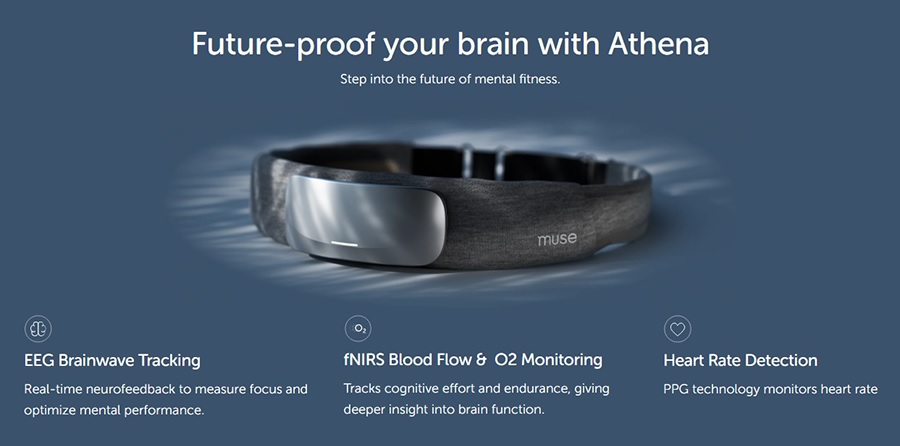
Restlessness rarely announces itself with a trumpet. It shows up as toe taps, chair pivots, and that slow lean toward the phone you did not mean to grab. These tiny movements are not random. They are your nervous system broadcasting that arousal and attention need a tune. With a bit of accelerometer data, you can learn what your body does before a focus dip, then swap fidget spirals for short, helpful resets. You will not need a lab or a stack of sensors. A phone, a watch, or a simple headband can give you enough signal to make good choices.
Contents
- The Restlessness Loop: What Small Movements Say About State
- Accelerometers 101: What They Capture and How to Read the Signals
- A Simple Home Setup: From Data Collection to Meaningful Decisions
- Movement Triggered Interventions: Five Routines That Actually Help
- A Four Week Plan to Tame Fidgety Days and Restless Nights
The Restlessness Loop: What Small Movements Say About State
Think of attention as a stage crew that keeps spotlights where they belong. When stress rises or tasks overrun your capacity, that crew starts bumping into props. Your body mirrors the chaos. Shoulders creep up, breath shrinks, and micro movements multiply. These small shifts matter because they feed back into the brain. A clenched jaw and a bouncing knee are not only symptoms, they are also signals the system reads as keep scanning. That is why restlessness can snowball during long stretches at a screen. Movement begets urgency, urgency begets more movement, and your best thinking gets squeezed by the loop.
Breaking the loop starts with noticing its early beats. Many people show a pattern. Visual tunnel first, then jaw tension, then finger drumming, then a tab opens that has nothing to do with the work. Others have a drowsy version, posture slumps, head nods, and a slow, unfocused scroll. The fix for both versions is the same: catch the loop early and offer a brief intervention that resets posture, breathing, and gaze. When you do that within a minute of the first fidgets, the next block of work feels smoother and you avoid the kind of distraction detours that eat half an hour.
Here is where accelerometers earn their keep. Your own sense of restlessness is subjective and easy to rationalize. A simple movement trace does not argue. It shows that your leg started tapping right after you opened a dense document or that your stillness dropped during a tense meeting. Pair the trace with how the next five minutes felt and you have a map you can use. Instead of pushing through with gritted teeth, you can run a sixty second reset and return steadier. Small science applied with kindness beats heroic willpower most days.
Accelerometers 101: What They Capture and How to Read the Signals
An accelerometer senses changes in acceleration along three axes, often labeled x, y, and z. Your phone, watch, and many headbands contain one. When you move, the sensor reports how quickly speed changes and in what direction. Most apps convert those raw values into a single magnitude so you are not juggling vectors. Sampling rates vary by device, from a handful of points per second to dozens. You do not need high speed data to learn useful patterns for attention. What you need is a steady mount, a consistent location on your body, and a simple way to summarize motion across minutes.
Three friendly concepts cover most of what you will use:
- Activity counts: a rolling sum of movement magnitude in a short window. Higher counts mean more motion. You can compare counts across time blocks and tasks.
- Stillness ratio: the percentage of a block where movement stays below a small threshold. A rising ratio during focus blocks usually means posture is calmer and attention feels steadier.
- Jerk: the rate of change of acceleration. Spiky jerk often shows up during frantic tab switching or tense meetings. It is a useful clue that your system is bracing.
You can also build a fidget index. Mark a block as fidgety when short bursts of movement appear every ten to twenty seconds for at least two minutes. Count how many fidgety blocks you have per hour. Under steady conditions, that count should fall as your routines improve. None of these metrics require heavy math. Many consumer apps already show an activity graph, and a few note stillness explicitly. If your app does not, a simple manual log, fewer taps than last week, will still move you in the right direction.
Finally, context matters. Movement during a standing presentation or a staircase lap is healthy. Movement that pops up during a five minute read is often a red flag. Compare like with like, task to task and hour to hour, and the signals will make sense quickly.
A Simple Home Setup: From Data Collection to Meaningful Decisions
You can start with whatever sensor you already own. A phone in your pocket tracks leg and trunk motion well. A watch catches wrist fidgets and can deliver haptic prompts. Some EEG headbands include accelerometers that sense nods, jaw motion, and stillness. Comfort and consistency matter most. Pick one carry position and stick with it for a week. Then build a tiny routine around your most important block of the day so you get comparable data from session to session.
Your kit in plain terms
- Phone or watch: keep it in the same place during focus blocks, pocket, waistband clip, or non dominant wrist. Avoid desk surfaces that vibrate during typing.
- App: choose any tool that shows minute level motion and, ideally, a stillness or activity count. Export is nice to have, not required.
- Optional EEG headband: a consumer device such as the Muse headband includes motion sensors for stillness checks and basic attention exercises. It is not a medical device and does not diagnose conditions. Some people use it for a one minute settle at the start of a block, then remove it and work.
- Notebook: a small paper log with two numbers after each block, clarity one to ten and task finished yes or no.
How to run a clean session
- Mark the start: sit tall, soften your jaw, and take three slow breaths. Start a 25 minute timer.
- Keep position consistent: do not move the sensor mid block. If you stand, do it at the same time each session.
- Mark interventions: if you take a microbreak, clap once softly or tap a key so you can spot the moment later. No need to annotate in real time.
- Log the end: write your two numbers and one note, for example, fidget spikes during email, breathing reset helped.
After a week, patterns emerge. You will learn which tasks trigger the jumpy trace, which time of day feels lightest, and how much a sixty second reset changes the next five minutes. That is enough information to start trimming restlessness without chasing perfect data.
Movement Triggered Interventions: Five Routines That Actually Help
Once you spot your early warning pattern, you can pair it with a brief intervention that resets the systems that matter. These do not need to be grand. They need to be quick, repeatable, and kind. The right reset lowers movement in the next few minutes and makes attention feel usable rather than brittle.
1) HRV breathing, 60 to 120 seconds
- Breathe in for four counts and out for six, quiet and low. Keep shoulders down and jaw soft.
- Use a visual pacer if it helps. Many people feel steadier in under two minutes.
- When to trigger: fidget index spikes twice within a minute or jerk climbs while reading.
2) Gaze and posture reset, 30 to 60 seconds
- Stand or sit tall. Look 20 feet away for twenty seconds, then return with a softer gaze.
- Roll shoulders forward and back once, then drop them. Relax tongue from the roof of the mouth.
- When to trigger: tunnel vision and jaw tension show up on repeat.
3) Movement snack, 60 to 90 seconds
- Walk a quick hallway loop or do ten controlled chair squats.
- Finish with two slow breaths before sitting. Movement clears static so stillness can return.
- When to trigger: rising restlessness paired with heavy eyes.
4) Haptic nudge, as needed
- Set a watch alert to vibrate when stillness falls below your chosen threshold for three consecutive minutes.
- Respond with the smallest reset that works, usually gaze and posture or a single minute of breathing.
- When to trigger: during meetings where you cannot stand but want to avoid escalating fidgets.
5) Attention settle, 60 seconds
- Close or soften your eyes and place attention on breath or fingertip touch.
- If you own a headband like Muse, use one minute of audio cues to feel the click of steadiness, then remove it and continue.
- When to trigger: before the heaviest block of the day or after a tough interruption.
Treat these like recipes. If a reset feels fussy, shorten it. If it feels sleepy, add a quick stand and open your gaze at the end. The goal is a quick return to productive stillness, not a perfect score in an app.
A Four Week Plan to Tame Fidgety Days and Restless Nights
Consistency changes biology. You do not need a boot camp. You need a simple plan that teaches your system what calm focus feels like and how to reach it quickly. This progression keeps the work light and the feedback friendly. The only numbers you must track are clarity one to ten and whether the next small task got done.
Week 1, notice and name
- Run one 25 minute block on three weekdays with your chosen sensor in a fixed position.
- Log clarity and task completion. Note any obvious fidget triggers, long emails, tense calls, dense reading.
- Install a single reset, gaze and posture for 30 to 60 seconds whenever you catch the first taps.
Week 2, add a breathing primer
- Start each heavy block with a one to two minute HRV style breathing primer, in four and out six.
- Consider a gentle haptic nudge for meetings. Keep alerts soft and rare.
- If evenings are restless, add a seven minute wind down, dim light, slow breath, and a short body scan. Many watches can log a fall in movement before bed as a helpful trend.
Week 3, train recovery after interruptions
- When an interruption hits, mark the time and run a 60 second attention settle before resuming.
- Compare stillness ratios and clarity ratings for blocks with and without the settle. Keep what helps.
- Move your most demanding work to your lightest hour based on a week of logs.
Week 4, personalize and sustain
- Pick the two resets that moved the needle. Make them non negotiable during weekdays.
- Reduce tracking to a weekly glance at activity counts and a short note about how the days felt.
- For sleep, keep a consistent last screen time and a brief wind down so nightly movement drops faster.
By the end of a month, most people see fewer fidget spikes during work and a friendlier slope into bedtime. The point is not perfect stillness. The point is usable calm that lets your best thinking come through.

